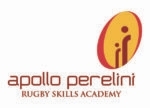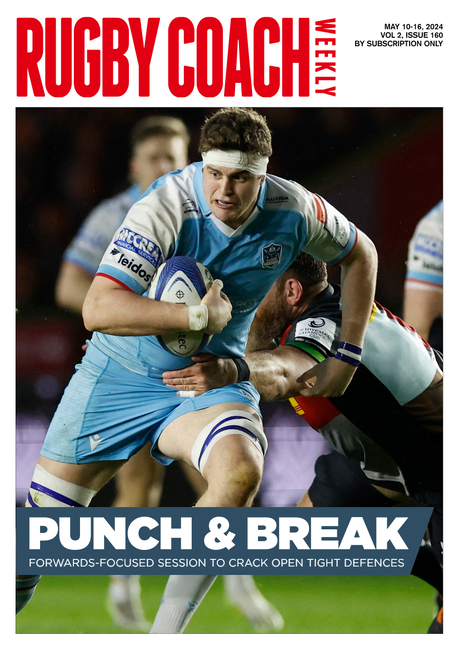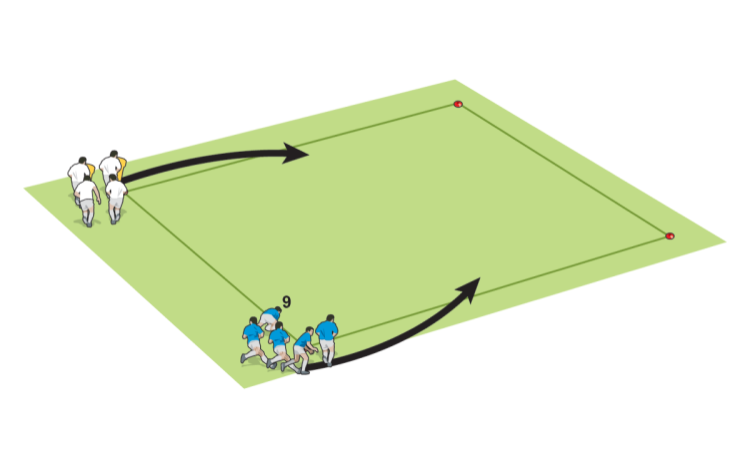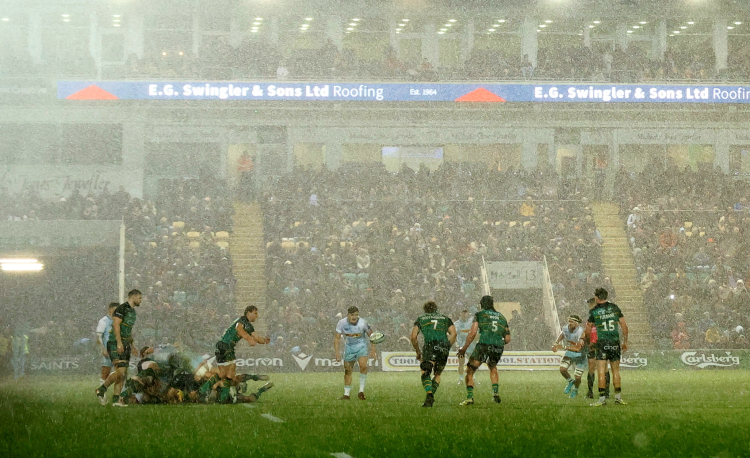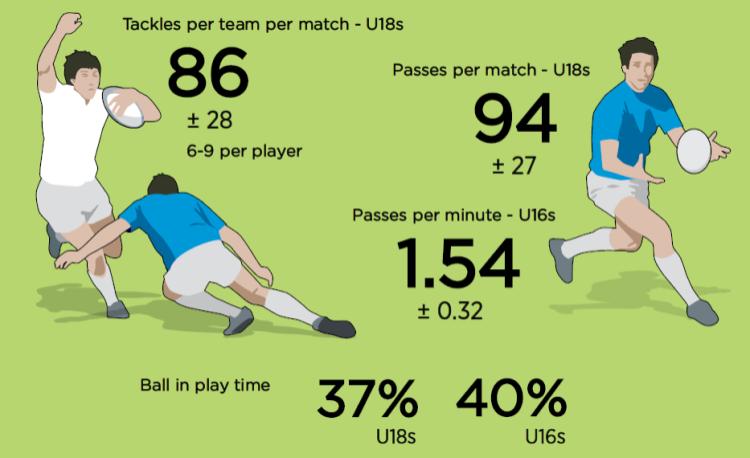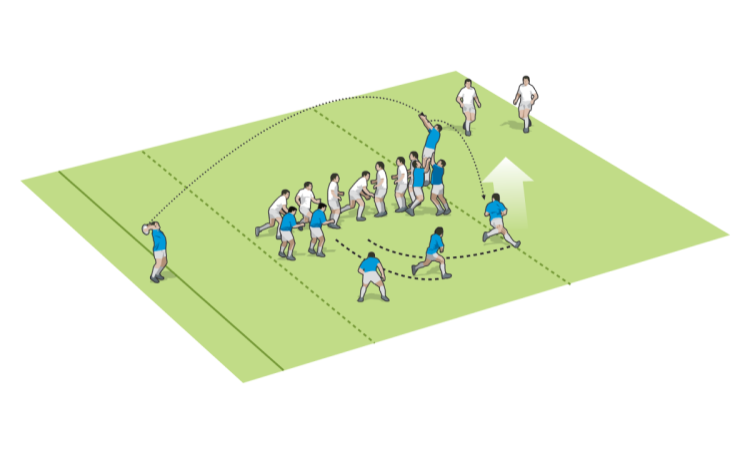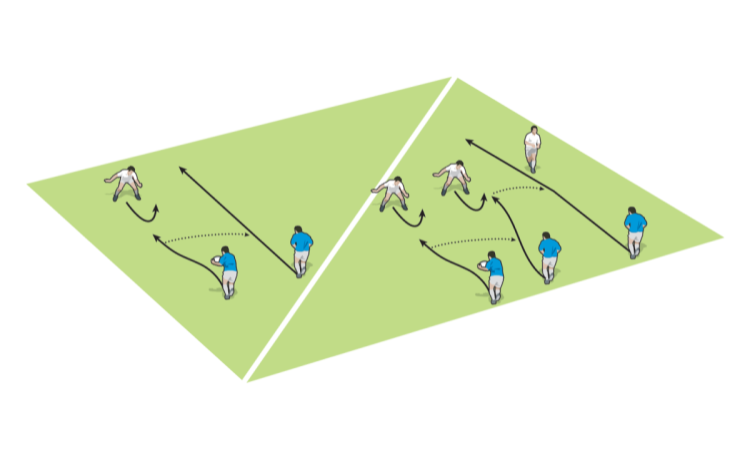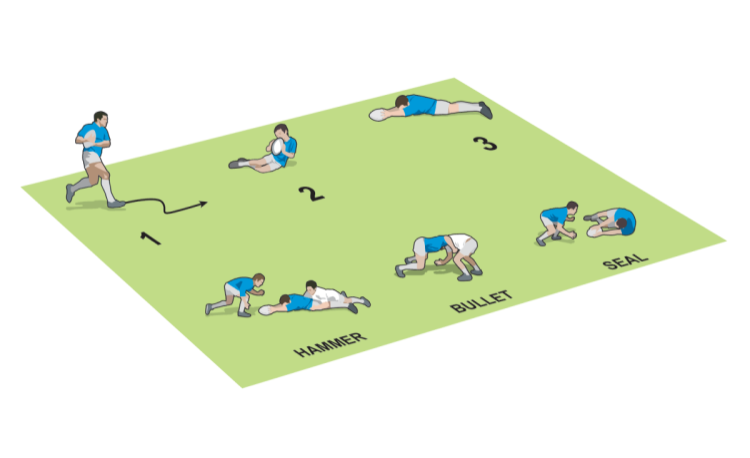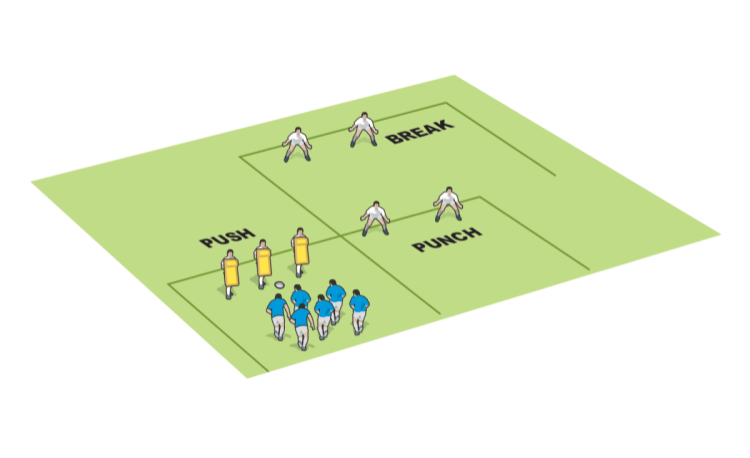You are viewing
1 of your 2 free articles
Whiteboard rugby: What's an X-Ball?
Tacticsby Sam Larner
What is an X-Ball and how could this simple play be used to breakdown an organised defence.
The X-Ball is a very simple attacking move that can be run at any level of the game.
It involves three attackers; the ball carrier, a hard runner, and a soft runner. The hard runner will come from the outside and run back towards the ball and the soft runner will run behind the back of the hard runner.
The ball carrier’s job is to read the hips of the outside defender.
Here are some activities to help work on the skills:
The X-Ball is a very simple attacking move that can be run at any level of the game.
It involves three attackers; the ball carrier, a hard runner, and a soft runner. The hard runner will come from the outside and run back towards the ball and the soft runner will run behind the back of the hard runner.
The ball carrier’s job is to read the hips of the outside defender.
- If the outside defenders moves their hips inside to cover the hard line then the best option is the pass out the back to soft runner.
- If the defender’s hips point outwards, to cover the soft runner, then the option would be to pass to the hard runner.
Here are some activities to help work on the skills:
Newsletter Sign Up
Coaches Testimonials

Gerald Kearney, Downtown Las Vegas Soccer Club

Paul Butler, Florida, USA

Rick Shields, Springboro, USA

Tony Green, Pierrefonds Titans, Quebec, Canada
Subscribe Today
Be a more effective, more successful rugby coach
In a recent survey 89% of subscribers said Rugby Coach Weekly makes them more confident, 91% said Rugby Coach Weekly makes them a more effective coach and 93% said Rugby Coach Weekly makes them more inspired.
Get Weekly Inspiration
All the latest techniques and approaches
Rugby Coach Weekly offers proven and easy to use rugby drills, coaching sessions, practice plans, small-sided games, warm-ups, training tips and advice.
We've been at the cutting edge of rugby coaching since we launched in 2005, creating resources for the grassroots youth coach, following best practice from around the world and insights from the professional game.
More from us
© 2023 Rugby Coach Weekly
Part of Green Star Media Ltd. Company number: 3008779
We use cookies so we can provide you with the best online experience. By continuing to browse this site you are agreeing to our use of cookies. Click on the banner to find out more.
